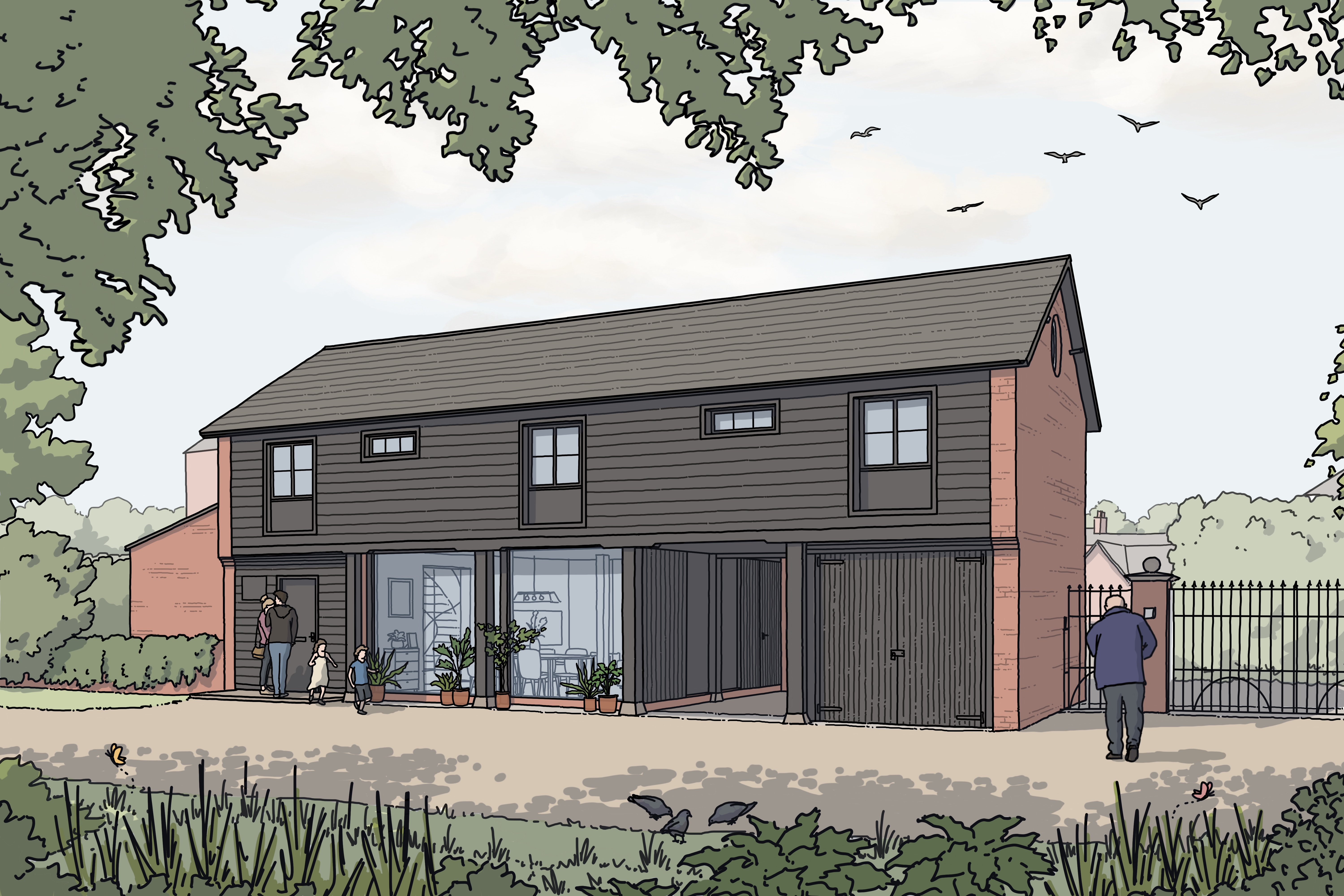Last month we finally secured planning for the plans to amend The Granary in the New Forest, we often find planning isn’t difficult to secure for our clients however this project was a little harder to achieve due to its setting within listed building curtilage (it is a heritage asset not listed building status itself). We felt it might be an interesting tale to share, to show the importance design, perseverance and communications can have on a project.
From the onset we knew it might be a tricky scheme to get over the line, as pervious planning applications had stated that the retention of the open bays on the ground level were essential as an intrinsic aspect to the character of the building. However, from investigating the project, working with planning specialists and talking to the local neighbours and council members, we felt we might be able to design something that everyone could agree on.
The property itself does not have an individual listed status, but the building is set within the curtilage of a grade II listed farmhouse and barn, which had to be taken into consideration when preparing the design within the sensitive site. You can read more about working on listed and heritage buildings here.
Our careful design introduced glazing to create an infill to two of the open bay sections, to create a larger living and kitchen space on the ground floor and allowing for an additional bedroom to be created on the first floor. The glazing highlighted the change as a modern addition, preserving the character and appearance of the original scheme.
The initial planning permission refusal was going to be refused, based on the conservation officers concern over the impact this work would have on the character and appearance of the property. We reviewed the comments and refined our design, removing aspects like a Juliette balcony on the first floor and changing the roof light on the side extension to be flush to reduce its visual impact.
Unfortunately, this modified design proposal was still going to be refused, so we took it to a committee where members of the Council took their vote and the permission was granted having won by majority. Taking this route was not an option we take lightly, as we respect the planning department especially in terms of preserving our architectural heritage, but we felt this design had carefully worked with the existing building and would not be detrimental to the heritage of the building. The changes would also allow the owners to stay in the home they loved, rather than out growing the two-bedroom property and having to move.
Alongside working this design work, we also worked to speak to the local council, local authority and neighbours to garner their thoughts and approval of the scheme. The neighbours were actively supportive of the scheme throughout the process, some even spoke at the committee meeting in favour of the plans. This pro-active dialogue with authorities was vital at the planning post-submission stage, to show the sympathetic design was essential for the owners and was approved by those local to the site.
Get in touch if you have a heritage or listed project you might need help achieving planning on.
